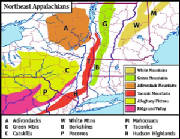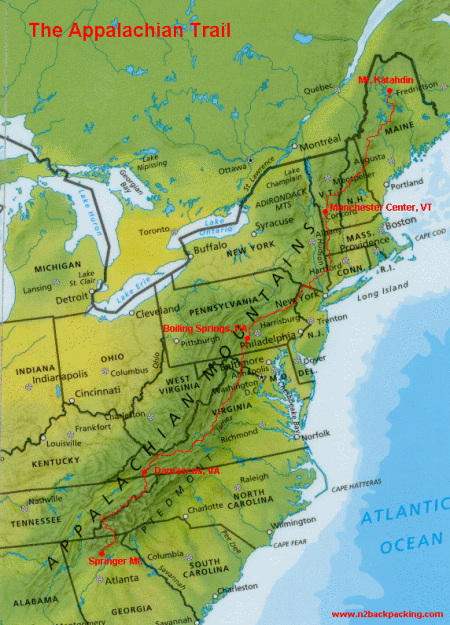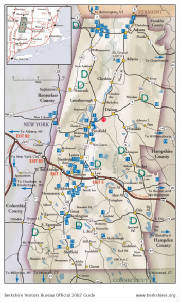|
PLACES DOING WELL
73 Cappadocia, Turkey
73 Pantanal, Brazil
72 Central Copenhagen, Denmark
72 Northern Coast, California
72 Coastal Area, Maine, U.S.
72 Tuscany, Italy
72 Salzburg Historic Center, Austria
71 Ring of Kerry, Ireland
71 Eleuthera, Bahamas
71 Uluru (Ayers Rock), Australia
71 Rapa Nui (Easter Island), Chile
71 Yellowstone/Grand Teton Region, Wyoming-Montana-Idaho, U.S.
71 Amsterdam Historic Center, Netherlands
71 Laurentian Highlands, Quebec, Canada
71 Upolu, Samoa
71 Serengeti Plain, Tanzania
71 Delphi, Greece
71 Santa Barbara to Monterey, California, U.S.
70 Taos and the Enchanted Circle Tour, New Mexico, U.S.
70 Kruger National Park, South Africa
69 Seychelles
69 Lake District, Italy
68 Williamsburg/Yorktown/Jamestown, Virginia, U.S.
68 Cornwall, England, United Kingdom
68 Copán, Honduras
67 Waterton-Glacier "Crown of the Continent" Region, Alberta-Montana-British Columbia
67 New Caledonia
66 Colorado Rockies, Colorado, U.S.
66 Bluegrass Country, Kentucky, U.S.
66 Grand Canyon/Tusayan, Arizona, U.S.
66 Qin Emperor Mausoleum, Xi'an, China
66 Dalmatia's Coastal Isles, Croatia
66 Patagonian Andes Region, Argentina
66 British Virgin Islands
65 Arches/Canyonlands/Moab, Utah, U.S.
65 Yosemite Area, California, U.S.
64 Inside Passage, Alaska-British Columbia
64 Rajasthan, India
64 Hue, Vietnam
64 Vanuatu Edit Text
| NORTHEAST MOUNTAIN RANGES |

|
| Click on image to enlarge. |
|
PLACES IN THE BALANCE
63 Traverse City & Lakeshore, Michigan, U.S.
63 Sonora Desert Region, Arizona, U.S.
62 The Grenadines, Caribbean
62 Costa Rica
62 Shenandoah Valley, Virginia, U.S.
62 Maui, Hawaii, U.S.
62 Great Barrier Reef, Australia
62 Prague Old Town, Czech Republic
62 Annapurna Circuit, Nepal
61 Grenada
61 Island of Hawaii, U.S.
61 Hill Country, Texas, U.S.
61 Mount Rushmore/Badlands, South Dakota
60 Petra, Jordan
60 Stonehenge, England, United Kingdom
60 Kerala Backwaters, India
59 Bali, Indonesia
59 Port Antonio Area, Jamaica
59 Reef and Islands, Belize
59 Valparaíso, Chile
58 Borobudur, Indonesia
58 Cape Cod, Massachusetts, U.S.
58 Kilimanjaro, Tanzania
58 Lake Titicaca, Bolivia-Peru
57 Azure Coast, Turkey
57 Victoria Falls, Zimbabwe/Zambia
57 Athens Acropolis, Greece
57 Santorini, Greece
57 St. Lucia
55 Cuzco, Machu Picchu, Sacred Valley, Peru
55 Tikal/Flores, Guatemala
55 French Riviera (Côte d'Azur), France
54 Niagara Falls Area, Ontario-New York
54 Rio de Janeiro Beach Districts, Brazil
54 Chiang Mai, Thailand
53 Masai Mara, Kenya
53 Byron Bay, New South Wales, Australia
53 Sanibel/Captiva, Florida
| APPALACHIAN TRAIL | GA to ME |

|
| Click on image to enlarge. |
|
PLACES WITH TROUBLES
52 Lalibela and Rock-Hewn Churches, Ethiopia
52 Northern Coast, Honduras
52 Agra Area (Taj Mahal, Agra Fort, Fatehpur Sikri), India
51 Long Island Shore (Hamptons to Montauk), New York, U.S.
51 North Coast, Crete, Greece
51 Venice and Lagoon, Italy
50 Tahiti, French Polynesia
50 Galápagos Islands, Ecuador
49 Great Smoky Mountains, North Carolina-Tennessee, U.S.
49 Lijiang and Three Parallel Rivers, Yunnan, China
48 Everglades and Big Cypress, Florida, U.S.
48 Lake Atitlán, Guatemala
48 Luxor (Thebes, Valley of the Kings), Egypt
48 Beijing Historic Districts, China
47 Andorra
47 Sinhalese Coastal Regions, Sri Lanka
46 Angkor/Siem Reap, Cambodia
45 Pyramids, Giza, Egypt
45 South Beach, Florida, U.S.
45 Potala Palace, Lhasa, Tibet, China
44 Ha Long Bay, Vietnam
44 Dead Sea, Israel-Jordan
44 "Riviera Maya," Caribbean Coast, Quintana Roo, Mexico
43 Algarve, Portugal
42 Costa Brava, Spain
42 Chesapeake Bay, Maryland-Virginia, U.S.
WORST RATED PLACES
41 Northern Red Sea Coast, Egypt
41 North Coast, Dominican Republic
38 St. Maarten/St. Martin
37 Cabo San Lucas Region, Mexico
35 Grand Bahama, Bahamas
34 West Bank, Bethlehem, Israel/Palestine
31 Costa del Sol, Spain
| BERKSHIRE COUNTY, MA |

|
| Click on image to enlarge. |
|

